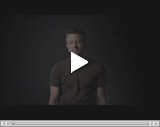     |
Learning to Teach
Materials
Here you'll find quick and usable tools to help you tackle these issues. Many of them are handouts, ready to simply open, print off and copy. The first section is for administrators and organizers. The materials in the second section are for use in tutor and teacher training; those in the third are for use with learners in institutional or community-based adult literacy programs. The final section is for everyone – they are suitable for all audiences – so don't forget to look there whether you are planning tutor training, a course for teachers, or a lesson for literacy or upgrading students.
For Administrators
- A big part of feeling safe and valued is identifying with, and being represented by the people working with you. That’s why it’s so important to do outreach work that aims at real diversity. A commitment to equity means it’s not good enough to say “Well, no people of colour came to the info session…” We have to work for it actively. Here is an example of an outreach flyer from Parkdale Project Read in Toronto.
- Why Address the Impact of Violence on Learning
This Administrators’ Preview to the tools on Changing Education makes the case for why it is important for colleges to address this issue. Every administrator should read this document!
These materials might also help to convince you, or others, that addressing the impact of violence on learning will make a difference. They reveal a little about the effect this work can have on student success and retention, and staff job satisfaction.
top of page
For Tutor and Teacher Trainers
Introduction to Changing Education Resources
A walk through the new resources and related materials on learningandviolence.net - a great introduction for all audiences.
More about learningandviolence.net
Jenny Horsman answers practitioners’ questions during a webinar. This discussion supplements the information about the new tools and the site as a whole.
- Acknowledging violence
- Anti-oppression Training
- Creating conditions for learning
- Creating holistic content
- Creating safety
- Exploring impacts
- Evaluation
- Exploring control, connection and meaning
- Making the Connections
Whether you are training new tutors or teachers, or are currently in training to work with adult learners, these 6 leaflets are useful for bringing the issues of violence and learning into teacher education in an accessible way. Each of them explores a different aspect of the impact of violence on learning, and offers things to think about and things to do to help everybody learn.
- Responding to disclosures
- Taking care of the whole self
- Telling Stories
Sometimes stories from real students can help us see why it is important to address the impact of violence on learning and show us the sort of difference it makes when we do. Stories like the one here can be useful in workshops when we want to convince tutors or teachers that we must all pay attention to this issue.
- Training Resources
Web-based resources for teaching and learning with survivors of violence
- Webquests and Questions for small groups
These resources can all be used in workshops to familiarize participants with the three tools in Changing Education.
The webquests are designed for practitioners to use alone or in pairs in workshops, or to prepare for workshops. They provide a guided introduction to each tool.
The question sheets are a tool to prompt reflection and small group discussion in workshops.
top of page
For Learners
- Too Scared to Learn - Easy to Read
There are many ways to use this handout. In one college-based class in Toronto, learners were told to stand or sit anywhere they felt like in the room – wacky was fine, and people settled on the fridge, under tables, or lying down with legs sticking out the door. Learners were then invited to read a section aloud whenever they felt moved to speak. One by one they went through the whole handout in order, naturally filling the long and comfortable silences. This approach made everyone’s complex relationships with the material ordinary and okay, and no one disclosed why they chose to read a particular section. Being wherever they wanted in the room reflected a feeling of acceptance, and the openness of saying “whatever you need at this time is fine”.
- “Learning and Self-Care Strategies” Booklet
We often hear of people “bringing the whole self” to learning. This extraordinary booklet supports that process. It is filled with things for learners to think about and do when feeling “stressed” or “stuck”, and offers different ways to care for the body, mind and spirit to make learning easier. From lifestyle issues to time management, its clear-language sections present chances for self-expression and inspiration. Work through the whole thing over time, or pull out specific topics that answer immediate needs.
- “Celebrate Learning” Activity Book
This interactive workbook was created by the people at Parkdale Project Read in Toronto, and it’s all about learning itself! People can fill it with reflections about what and how they learn – in ways that celebrate each person’s unique strengths and learning styles.
- Surviving Christmas
The end-of-year holidays are a hard time for many learners – fear, bad memories, or the pain of loneliness are all made worse by a culture that surrounds them with messages that this is the best time of year, while greeting cards repeat how warm and special the holidays are. Just knowing that someone gets what this is like might help a lot.
Toronto educator and counsellor Ambrose Kirby has responded by creating alternative holiday cards for programmes to give to learners at the holidays – or at any festive time, such as the wrap up of a course. These cards recognize that though times may be tough, there are restful and fun things we can all do as we take a break.
Just open this pdf and print on double-sided card stock.
top of page
For Everyone
Learning and Violence Awareness Video
Use this one minute video with students, tutors, teachers, and administrators to introduce the impact of violence on learning and show that we can all do something to address it and make it easier for everyone to learn.
Please click on the image to view the video (in a pop up window).

top of page
|

